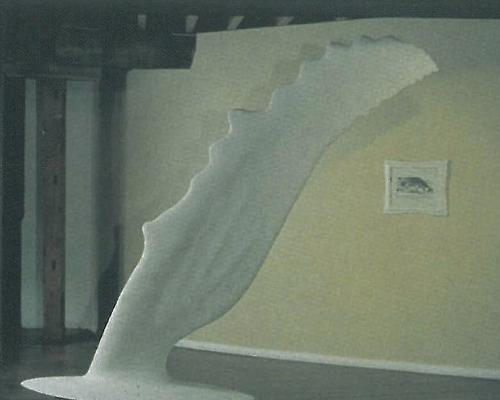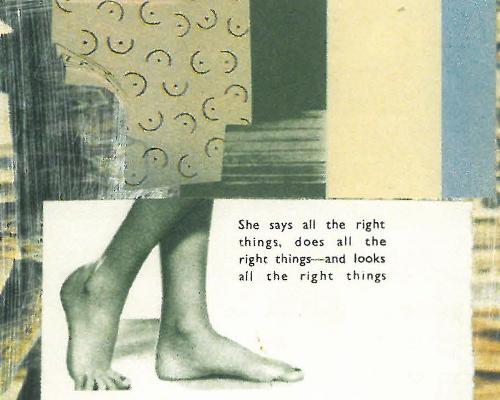In about 1987, well after the publication of the entrancing first volume of his autobiography, The Boy Adeodatus: the portrait of a lucky young bastard, Bernard Smith indicated he was working on a second volume on the encroaching impact of the Cold War in Sydney. A pavane for another time, which covers this period, has therefore had a long gestation.
It is a curious mix of the intensely personal, the dispassionate observation of an historian, and the recollections of a participant in the events of a time that has yet to be fully recorded in Australian cultural history. Indeed several volumes could have been teased out of this material, and still more questions would be there for the asking.
Until now the most interesting account of the shenanigans at the (then) National Art Gallery of New South Wales has been Hal Missingham's memoir They Kill You in the End (A& R 1973). Smith supplants this with a more measured voice, adding weight to Missingham's concerns on the conduct of Trustees and the need to create scholarship based on the collection. Indeed the book ends with the publication of his A catalogue of Australian oil paintings in the National Art Gallery of New South Wales (1953). He correctly lists this as a landmark in Australian art publishing, and the essential precursor to his better known Australian Painting 1790-1960. The discipline of cataloguing constrained the polemic at the core of the earlier Place, Taste and Tradition.
His insights on SORA (Studio of Realist Art), which gave a non-Stalinist face to Communist activities, endorse information given by the late Rod Shaw, and give a sense of what the contemporary art scene in Sydney could have been, but for the intervention of the cold warriors in the 1950s. Likewise his description of the activities and behaviour of Peter Bellew, Warwick Fairfax's favoured art critic at the Sydney Morning Herald in the early 1940s, helps in understanding the brutality of faction fighting within the arts.
In the chapters on life in England there is also a strong sense of what it meant to be a 'colonial', and from this the reader begins to understand how that double outsider status - colonial and illegitimate - has shaped much of Smith's scholarly writing. He stands apart as an observer and only occasionally as an invited participant. Within the rigid British caste system colonials sit as uneasily with the working class as they do with the aristocracy, and thus easily move between them, always as aliens. Because he was a colonial the non-graduate Smith was given de facto postgraduate status at the Courtauld Institute and therefore access to the most brilliant art historians of the last century. Through this, and through the traditional generosity of senior scholars to junior talent, he was able to undertake his ground-breaking research into European artists exploring the South Pacific (and publish) while still an undergraduate. The intellectual generosity that gave him this is contrasted with the rule-bound attitude of Sydney University which for many years denied matriculation to those students who lacked Latin.
One of the scholars who directed Smith's research was Charles Mitchell, who advised the young historian not to write the 'flatulent rhetoric' of fat books, but to be concise in his scholarship. This book would have benefited from a tough editor like Mitchell, but instead it has been treated with the reverence due to the country's senior art historian. So Smith is allowed to indulge (and repeat) his erroneous claim that an overworked painting of his youth, The Advance of Lot and his Brethren, is a major innovation in Australia art. The truth is that The Advance of Lot and his Brethren is evidence that Bernard Smith made the right career choice by writing about art instead of making it.
Then there is the matter of Cuthbert Adeney, the lecherous stepfather of Smith's wife Kate Challis. Kate's story is an important one. She was the patient wife and private scholar to balance Bernard's ambitious public performance. There are reasons for combining their story as a tribute to partnership. Much of this section of the narrative however reads like padding and it would have benefited by some savage cutting, especially the lengthy exchange of letters.
But Cuthbert? There is just too much of this irritating father-in-law. Is his looming presence a reminder that men are faithless, and therefore Kate should hardly have had great expectations of her husband? P erhaps it was just a case of the material being available and the historian's compulsion to publish, but much of it is simply tedious. There is also the question of Smith's judgement in including accounts of his various sexual encounters both before and after marriage. At times this reads like the literary equivalent of the bizarre portrait of the naked Bernard Smith exhibited in last year's Archibald Prize. However given the context it may well be less a case of indecent exposure and more a reminder that Smith himself is the accidental result of a fleeting relationship.
More analysis and less concentration on trivia would have made this a memorable book. Nevertheless it remains a valuable footnote to Australian cultural history.












